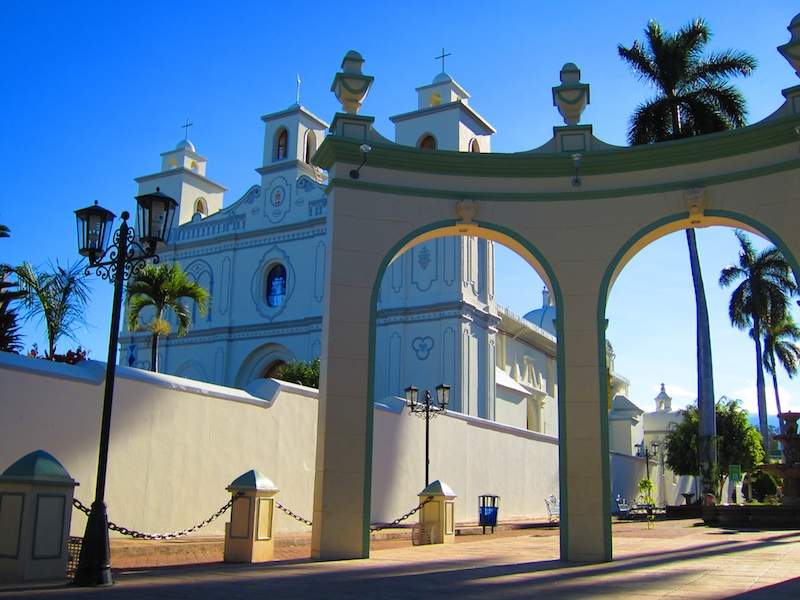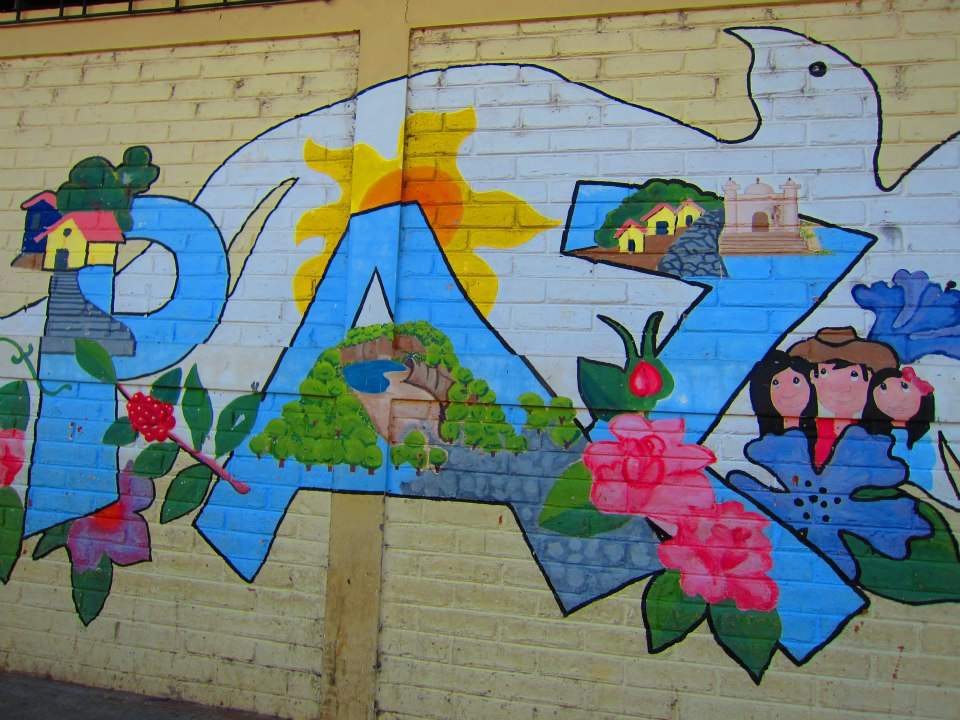This small country the size of Massachusetts is one of the least visited Central American destinations—and one of the best for indie travelers. El Salvador has some of the best roads in Central America and a pretty decent tourism infrastructure. Outside of tour guides and large San Salvador hotels, many people speak no English (but you didn’t come to Central America to hear English, did you?). Elements of service to the visitor and ease of traveling could be improved, but overall, for a mere two decades after a destructive civil war, it’s highly impressive how far they have come.
I highly recommend a visit here for the traveler interested in Central/Latin America—it offers a vast natural beauty, outgoing and interested people, and a fair amount of diversity for such a small geographical space. An easy way to organize your journey through El Salvador is by following the various rutas turistas, or tourist routes, that have been set up.
Here we present three routes that will give you a wonderful immersion into the history, ecology, and culture of the country.
Ruta de las Flores – The Route of Flowers

This winding, 36-kilometer path takes you through the heart of coffee country, from Sonsonate to Ahuachapán. While there are many national parks, coffee farms, quaint artisan towns, and stunning crater lakes in this region, it is named for the explosion of wildflowers that happens between October and February.
[social]
Here, you can wander the colonial-style villages where friendly locals are quick to smile and chat, and visit coffee farms perched on the sides of volcanoes for a glimpse into how that delicious cup ended up in your hands.
I adored El Carmen Estate ($65-85USD), set in a cool and pleasant forest and home to Cafe Ataco, one of the country’s best coffees. Founded in 1930 and owned by the Alfaro family for more than four generations, the beans here are grown at an elevation of 4,000 feet in volcanic soil that gives a depth and richness of flavor. You can tour the entire working operation and even stay in the adjacent 5-room guest house, set in lush gardens.
Ahuachapán is another wonderful colonial town, with a nice central square and requisite church. This is the capital city of this department (or state), and there is a lot of fantastic architecture here. Stay at La Casa Mamapan ($45-65USD), a small family-run inn with five cozy rooms. I found it interesting to wander through the common areas and enjoy the folk art throughout. Visit Pupuseria Olguita for an authentic taste of El Salvador’s beloved national comfort food, the pupusa. The place is owned by Lupita, whose grandmother started it and whose recipes are still used today.
Lake Coatepeque is an unbelievably blue, gorgeous crater lake formed by the area’s volcanic eruptions some 50-70,000 years ago. You arrive by road high above it, and the sudden views of it are stunning. Don’t miss Rancho Alegra, down on its bank. This restaurant is a lot of fun and a major destination for locals who not only eat there, but swim and fish from its docks and enjoy boat tours, jet-ski rentals, or being pulled along on a tube. The best house specialty is a fresh lake fish, served whole and grilled and stuffed with shrimp. Paired with a margarita on a sunny afternoon, it’s pretty much bliss. There’s also live music to entertain.
Daily Cost Guide
- Accommodation – $65 average for a B&B including breakfast (less expensive hostels are available in the major towns)
- Food – $30 average (one street food/café meal and one average restaurant meal per day)
- Sightseeing activities $2-4 average entry fees.
- Total: $100USD for a couple/$50 per person.
Ruta de las Artesians – The Route of Artisans

Less than two hours from the capital city of San Salvador you will find Suchitoto, a colonial town that has become a vibrant artists’ community. The cobblestone lanes surrounding the central church are filled with cafés, art galleries, craft shops and small independent hotels. One of the best of these is Los Almendros de San Lorenzo, an historic hacienda centered around a courtyard. The property has been painstakingly restored by Pascal Lebailly and his partners, who also own La Galeria de Pascal across the street. The gallery hosts many exhibitions and events, and also has a quite good shop with well-priced and high quality items. Lebailly is a wealth of information about Suchitoto and the surrounding artisan towns, and will arrange or lead guest tours.
Other spots well worth checking out in Suchitoto include the home and museum of Alejandro Cotto, a filmmaker and artist who nearly single-handedly saved the town during the war by convincing both sides of its value and beauty, and that it must be protected from destruction. The Theater of the Ruins and Arte Center for Peace are both great places to take in a culture or dance show, and afterwards you can check out the cool El Necio, a revolutionary bar with cheap drinks, posters, and artifacts everywhere, and a decidedly leftist vibe.
A great day trip from Suchitoto is to take the ferry across Lake Suchitlan to the more northern artisan towns of La Palma, where nearly every wall is covered in murals, and San Ignacio, near the highest point in El Salvador, El Pital mountain. To the east of Suchitoto lies San Sebastian, a town where weavers still create their beautiful textiles using traditional wooden handlooms, and Ilobasco which is known for its fine clay and ceramic works.
Daily Cost Guide:
- Accommodations $90 average including breakfast (less expensive hostels are available)
- Food $30
- Sightseeing activities $2-4 average entry fees.
- Totals: $125 for a couple/$63 per person.
Ruta de la Paz – The Route of Peace

Traveling in El Salvador, there are both constant remnants and reminders of the recent civil war, as well as an obvious moving forward. In fact, after the peace accord was signed in 1992, Salvadorans immediately began to leave the fighting behind and get on to the business of rebuilding their lives and their nation.
The Ruta de la Paz follows this history, extending up into the far northeastern region mere kilometers from the Honduran border, where the FMLN guerrilla revolutionary stronghold was, and where some of the bloodiest events of the war took place. The best first stop is the Museo de la Revolucion in Perquin—the Revolution Museum. Here, in a simple concrete building and surrounding plot of land, hundreds of artifacts from the war are collected in a way that tells a violent yet poignant story. Actual veterans are there to lead you through the museum and tell its stories, if you want them to. Behind the museum is a former guerilla camp, which you can tour and even cross jungle bridges and crawl down into underground tunnels used during the war.
Just a few miles down the road lies the town of Mozote, infamous for one of the worst massacres. On December 10, 1981, government military special forces (who had blocked the town in) executed everyone, including children—all in all, around 1,000 people died that day. There was just one problem for them: There had been a survivor. One survivor, out of a thousand. Her name was Rufina Amaya, who escaped by hiding in a tree, and eventually became a heroic symbol of resistance. Today there is a small museum dedicated to her, in her daughter’s house. Blink and you miss it; but if you seek it out, you will likely be rewarded with a greeting by a member of Amaya’s family. Farther off the highway, several miles up a rocky road in the heart of Mozote, is a memorial wall dedicated to the victims of the massacre.
Daily Cost Guide:
- Accommodations $55 average for a guest house, not including breakfast (try Casa Mia in Berlin or Hotel de Montana in Perquin)
- Food $30 average
- Sightseeing activities $2-4 average entry fees.
- Totals: $90 for a couple/$45 per person.
While El Salvador has had its share of heartache, it’s also had its share of beauty and joy—and Salvadorans are all too happy to share this with visitors. It’s a beautiful country that is little touristed; the perfect combination for the indie traveler in Latin America.
Indie trips including El Salvador
Planning a long-term trip? Looking for itinerary ideas that include El Salvador? Check out the following trips that include this Central American country.
All trips are easily customizable to fit your needs. Simply change the destinations (including departure city) and dates around to fit your needs, click “Search fares,” and get a price instantly – no waiting!
For more on visiting El Salvador, check out the following articles and resources:
- Read The Happiest Places on the Planet
- Read How to Plan an Extended Trip in Central America
- Read A Guide to Visiting Maya Ruins in Central America
- Catch a flight to El Salvador
- Find a hostel in El Salvador
Photo credits: All photos courtesy of the author and may not be used without permission.
